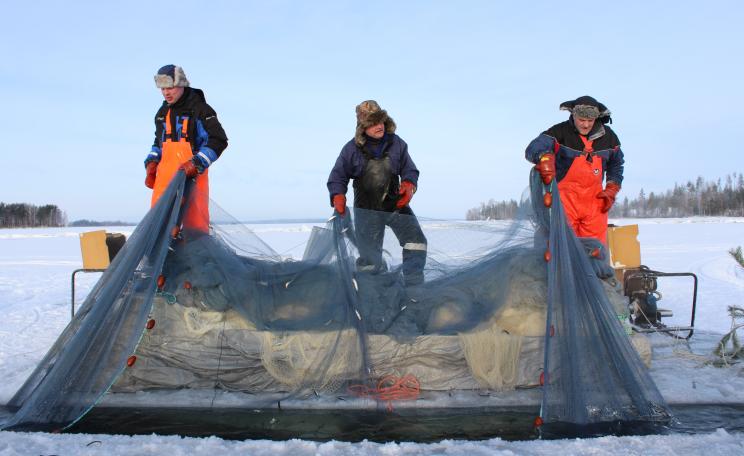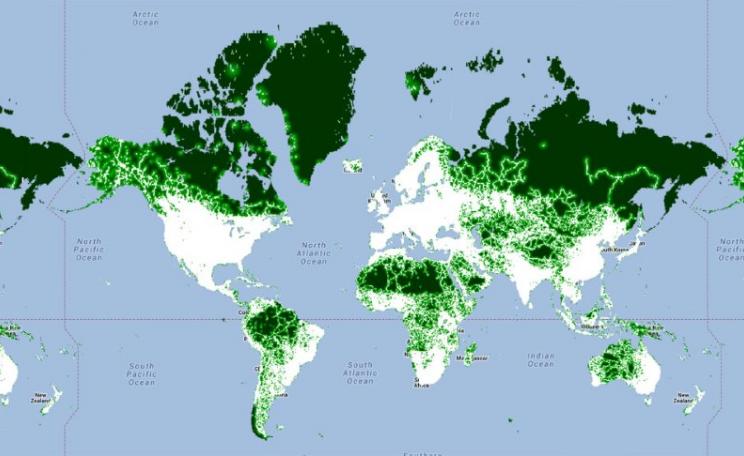Under business-as-usual climate projections, polar bears may face starvation and reproductive failure across the entire Archipelago by the year 2100.
The polar bears of the Canadian Arctic - at present they make their home in the nation's huge, frozen archipelago - face starvation and reproductive failure by the close of this century.
New research in the Public Library of Science Journal PLOS One confirms that the continuing loss of sea ice in the Arctic ocean puts pressures on the region's most iconic predator.
By 2100, polar bears in the high Arctic may have to endure between two and five months without access to any sea ice.
Ursus maritimus has evolved under harsh circumstances, can swim huge distances, and can survive long periods without eating. However, it can only do so if it has been able to build up energy reserves and to do this, the bear needs access to a rich source of fat and calories.
So it hunts seals, and to hunt seals, it must be able to get onto the sea ice. The ice is where it hunts, where it mates and where it migrates.
No ice, no seals
Stephen Hamilton of the University of Alberta and colleagues used climate models to work out the likely pattern of sea ice in the Canadian Arctic during the rest of the century. The Canadian archipelago is home to at least seven populations of polar bear, a species already declared vulnerable.
Researchers have measured a steady shrinking of the north polar ice sheet over the last 30 years and have also found that the remaining sea ice is becoming thinner. By mid-century, according to some researchers, the Arctic could be navigable one summer in two.
This is not likely to be good news for an animal that needs the ice to hunt to gain fat and to provide the energy for the next breeding cycle. Hamilton and colleagues put their message bleakly: "Under business-as-usual climate projections, polar bears may face starvation and reproductive failure across the entire Archipelago by the year 2100."
"Polar bears fare poorly when sea ice is absent for prolonged periods, losing body mass without the opportunity to hunt. Energetics modeling predicts that 2-3% of adult polar bear males could starve when the ice-free period reach 120 days and 9-21% could starve at 180 days of ice-free period with other age and sex classes even more vulnerable. Similarly, early break-up of sea ice could result in reproductive failure in 55-100% of pregnant females"
Under business-as-usual climate projections, polar bears may face starvation and reproductive failure across the entire Archipelago by the year 2100.
This may not mean the end of the species, but there are only 19 populations of polar bears in the world. The seven populations that hunt or den in the Canadian Arctic Archipelago make up probably a quarter of all the planet's polar bears, even though the Canadian islands make up less than 10% of the polar bear's range. So what happens in the Canadian Arctic could be critical.
By 2100, all areas may 'pass the point of no return'
What seems to govern polar bear behaviour is the concentration of sea ice (as % of sea area): if the concentration falls below between 30 to 50%, the bears tend to abandon the ice and move ashore to await the return of winter. The longer the bears stay ashore, the briefer the access to seal blubber.
At this point the extent of the ice-free period becomes critical. If the ice-free period lasts 120 days, two or three bears in every hundred could perish. If it lasts 180 days, then 20% could starve. If the ice breaks up too early, between 55% and 100% of pregnant females could lose their cubs.
The scientists' research is intended to help conservation programmes, but there may not be much future for the bears in the far north of Canada.
"We find that sea ice conditions may become unsupportive of polar bear population persistence in the CAA (Canadian Arctic Archipelago ) its surroundings by the late 21st century with ice-free seasons reaching critical duration, and early break-ups occurring in parts of all populations we examined", they write.
"Similarly, to the east of the CAA, the west coast of Greenland and much of Baffin Bay may no longer be suitable habitat for polar bears before 2050 ...
"By 2100 all regions of the study area may cross the critical point-of-no-return", the authors say, "putting the persistence of the Canadian Arctic Archipelago polar bear populations in jeopardy."
The paper: 'Projected Polar Bear Sea Ice Habitat in the Canadian Arctic Archipelago' by Stephen G. Hamilton et al, in PLOS One.
Tim Radford writes for Climate News Network.







